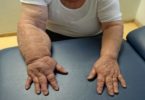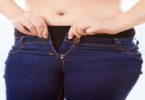Hair is composed primarily of proteins. It is made of three layers –the medulla, cortex, and cuticle. Damaged hair is caused by many factors such as excessive heat styling. It is characterized internally by open cuticles and broken protein bonds. Physically, damaged hair is rough, brittle to the touch, and prone to split ends.
Hair can be damaged by chemical exposure, prolonged or repeated heat exposure (as through the use of heat styling tools), and by perming and straightening.
Oil is harmful for rough hair and for dry scalp as it decreases nourishment for hair leading to split and hair fall. When hair behaves in an unusual way, or a scalp skin disorder arises, it is often necessary to visit not only a qualified physician, but sometimes a dermatologist, or a trichologist. Conditions that require this type of professional help include, but are not limited to, forms of alopecia, hair pulling/picking, hair that sticks straight out, black dots on the hair, and rashes or burns resulting from chemical processes. Gel provides a shiny look but dries the hair and makes it rough.
Causes
There are many factors that can damage your hair by:
Heat Styling
Heat Styling is a leading cause in damaged hair. Heat cracks hair’s cuticle and withdraws moisture leaving hair dry and brittle. Below is a list of heat styling tools which damage hair and some tips to prevent heat damage.
Heat Styling tools which damage hair:
- Hair dryers
- Hot rollers
- Curling irons
- Flat irons
New innovations in heat styling, such as ionic technology work with heat to restore damaged hair. Ionic technology has been incorporated in heat styling products such as blow dryers and flat irons. Popular products such as the T3 Tourmaline hair dryer and Sedu flat iron are famous because of ionic technology.
Harmful chemicals
Many chemicals such as bleaches, perms, and relaxers damage hair greatly. In order for them to work they must swell hair’s cuticle. This process roughens cuticle, making it prone to chipping and breaking off. These chemicals also wear down protein bonds in hair–the very thing that keeps our hair strong and lustrous.
The end result is weakened damaged hair. Below are common chemicals which damage hair:
Common chemicals which damage hair:
- Bleach
- Hair dyes
- Perms
- Relaxers
- Straighteners
Harsh weather conditions
Environmental conditions affect hair year round. Harsh weather conditions otherwise known as “bad hair days” cause hair to become dry, brittle, and prone to breakage. During the summer, the sun’s UV rays break protein in hair.
Hair’s composition is 88% protein. Protein protects hair and when it breaks down- hair becomes dry and damaged. The sun is especially rough on chemically processed hair, often being responsible for color gone brassy.
Believe it or not, the winter is most drying to hair. This is because there is less moisture in the air. The cold winds tangle hair and roughen hair’s cuticle. Protecting your hair year round is essential. After all, you never know when you’ll face a “bad hair day.”
Friction
Out of all the factors discussed, Friction damages hair most frequently. Daily activities such as combing your hair and sleeping cause friction. The constant rubbing of hair against a surface breaks hair. If you do not protect your hair while you sleep, the friction between your pillow and hair will cause damaged hair. Also, combing hair too often and not using the appropriate comb breaks and damages hair.
Symptoms
There are a number of disorders that are particular to the scalp. Symptoms may include:
- Abnormal odor
- Bleeding
- Bumps
- Caking skin buildup that appears white or another color than one’s natural skin tone
- Chafes
- Clumps of hair falling out
- Clumpy flakes that do not easily slough off the scalp skin
- Dandruff and clumps
- Excessive itchiness that doesn’t go away with a few hair wash, redness of scalp skin
- Patches of thinning
- Pus-like drainage
- Shedding
Any of these symptoms may indicate a need for professional assistance from a dermatologist or trichologist for diagnosis.
Treatment
There are over-the-counter products that can help to treat your damaged hair.
START SOFTENING
Conventional thinking suggests that shampoo cleans, conditioner hydrates, and that’s that. But using a moisturizing duo earns you major extra credit points. Argan oil, found in Redken All Soft Shampoo and Conditioner, makes dry, coarse hair softer and silkier because it’s rich in fatty acids.
WASH GENTLY
You know that squeaky-clean feeling you get from a fresh shampoo? Yeah, you should avoid that. Superfoamy suds can actually strip your hair and rough up the cuticle, which leaves hair frizzy and parched.
FIX SPLIT ENDS
Used to be that the only cure for split ends was scissors. But now, there’s a Tresemmé split-end treatment, which temporarily glues each frayed strand back together. It’s pretty hard-core science: When a hair splits, it gets a negative charge. The combination of two polymers in Tresemmé Split Remedy Split End Sealing Serum has a positive charge. The split hair and the serum act like magnets, bonding to each other, and the Band-Aid effect is visible after three washes.
ADD SHINE
It’s like a topcoat for your hair one dose of John Frieda Clear Shine Luminous Glaze gives glossiness that lasts a week, and it dries quicker than a coat of clear nail polish. We love the original clear formula, but the variety of shades made our testers’ brown hair shinier and blonde brighter.
SMOOTH ROUGHNESS
At least once a week, do more thorough repairing with a deep conditioner such as Pantene Pro-V 2-Minute Moisture Hair Masque Deep Conditioner. The ingredients coat strands with a smoothing film that camouflages damage and dryness for days. Comb it through hair in the shower, and leave it on while you shave your legs so it has time to get the job done.
BLOW-DRY WITHOUT DAMAGE
This blow-dryer improves hair’s condition as it dries. No, seriously. Instead of a hot stream of air whipping hair around and dehydrating strands, the T3 Featherweight Luxe 2i chugs out 58 times more heat energy hair dries so fast that it not only doesn’t sustain damage, it’s actually in better shape than if you had never turned on a blow-dryer in the first place. “The dryer evaporates water at the surface so quickly, it never touches the moisture within the strands that’s so essential for hair health,” says T3’s director of design, Gregory Warmsley.
TAME FLYAWAYS
We know how tempting it is to flatiron flyaways into submission, but John Frieda Full Repair Touch-Up Flyaway Tamer does the job better, smoothing broken hairs and flyaways with targeted precision (and minus the damage.) The oversize spooley brush evenly spreads on a serum packed with lightweight Inchi oil for a nongreasy coat of moisture and shine.
PROTECT FROM HEAT
Oscar Blandi Pronto Dry Styling Heat Protect Spray pumps up droopy waves, deflates frizz, and adds shine to any blowout—without leaving behind an oil slick. It even increases the life of your style by locking in the shape, says hairstylist Matt Fugate. Coat your hair evenly with a light mist before curling to refresh a days-old blowout. Just avoid the roots.





